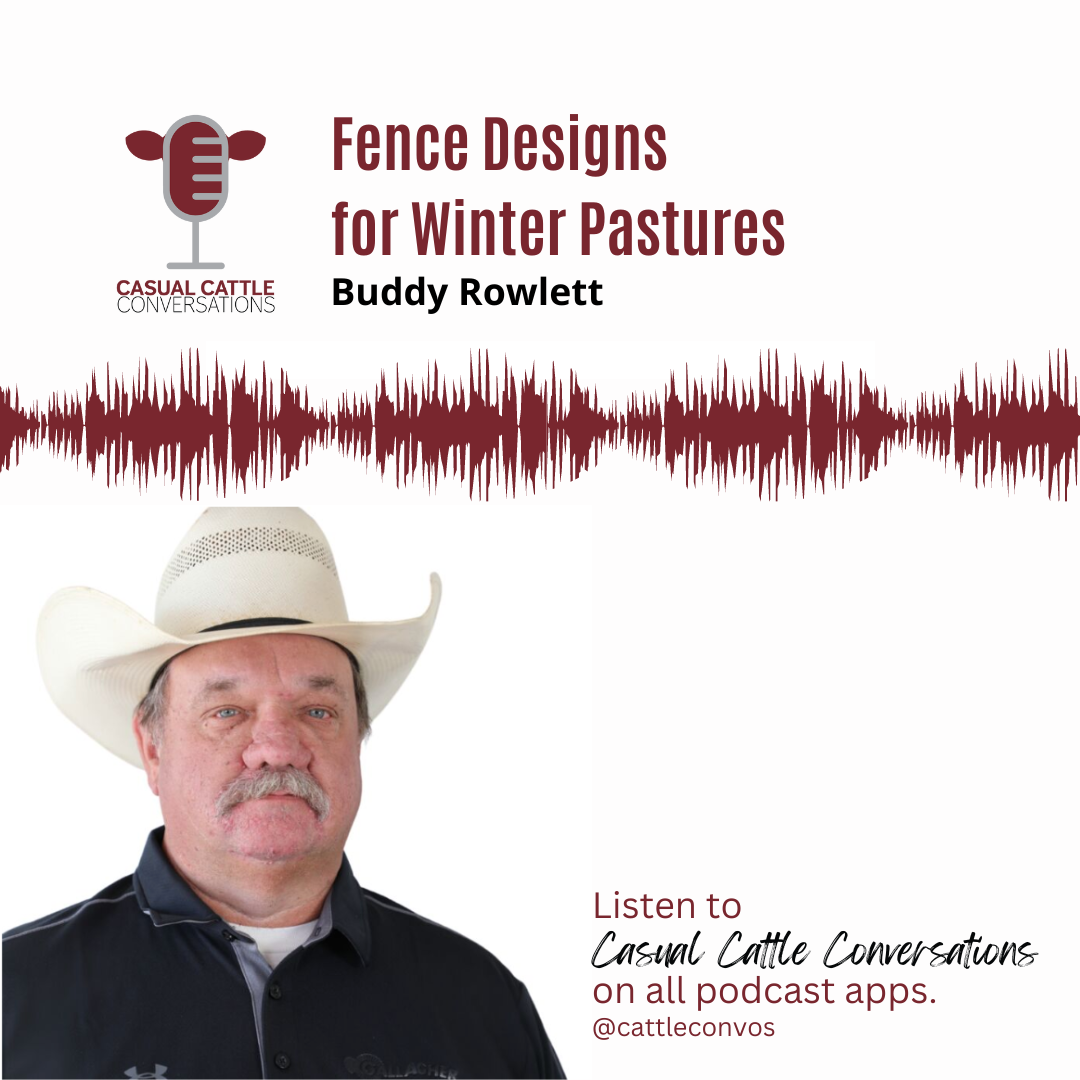Fence Designs for Winter Pastures

Question of the Week: Is your grazing plan outdated?
When was the last time you took a deep dive into your grazing plan and asked yourself why you turn out and graze when you do?
The guests on the past two podcast episodes have brought up that they often see ranchers resort to feeding and supplementing sooner than they need to or even ignoring winter grazing opportunities that would lower input costs.
I’d encourage you to take a few minutes this week to open your mind to think about how you can improve your grazing strategies.
Episode Summary
Buddy Rowlett joins the show from Richmond, Kansas where he raises cattle and works for Gallagher Animal Management. Rowlett shares tips and strategies for working around the challenges winter throws at cattle producers when it comes to winter fencing. This short podcast episode covers the basics of managing added snow pressure through fence design, working with frozen ground and offers a creative solution for electric fences during winter storms.
Snow Pressure and Fence Design
Snow pressure puts extra weight on tapes, wires, posts and corner braces. Your fence design plays a large role in helping your fence get through winter in the best shape possible. Accommodating for snow pressure begins with your corner braces. Rowlett shares that your brace rail should be 2.5 times as long as your fence is tall to reduce the angle of the rail and pressure being placed on the corner post. He also mentions that loosening wires in the winter removes some of the pressure from snow drifts on fence lines and reduces the chance of wires breaking. For temporary electric fences used in the winter, you want to add extra posts to eliminate the tapes and wires from sagging and breaking.
Working with the Frozen Ground
The best solution to avoid working with frozen ground is to prepare and build before it freezes. Create a plan for where and when you will need fences, ground rods and energizers to avoid this challenge. Know when you will be grazing which stockpiled forages or crop residues and push these posts in during the fall. If you are using a permanent fence with an electric offset, you don’t have to worry about this challenge as long as your grounding system is already in place.
Other Winter Fencing Challenges
Having hard ground and snow pressure are not the only challenges that need to be overcome during the winter. Rowlett shares that often times temporary posts and tapes are white. This blends in with the snow and makes it difficult for cattle to see the fence. He encourages cattle producers to use green and orange supplies when possible. Snow is also an insulator, and you may need to use a different grounding system for the fence to be effective. And finally, if you are using a solar-powered energizer, be sure to clean off the solar panel so that it can charge.
I hope you enjoyed these fencing tips and strategies shared by our friend from Gallagher, Buddy Rowlett. May the odds be in your favor this winter!








